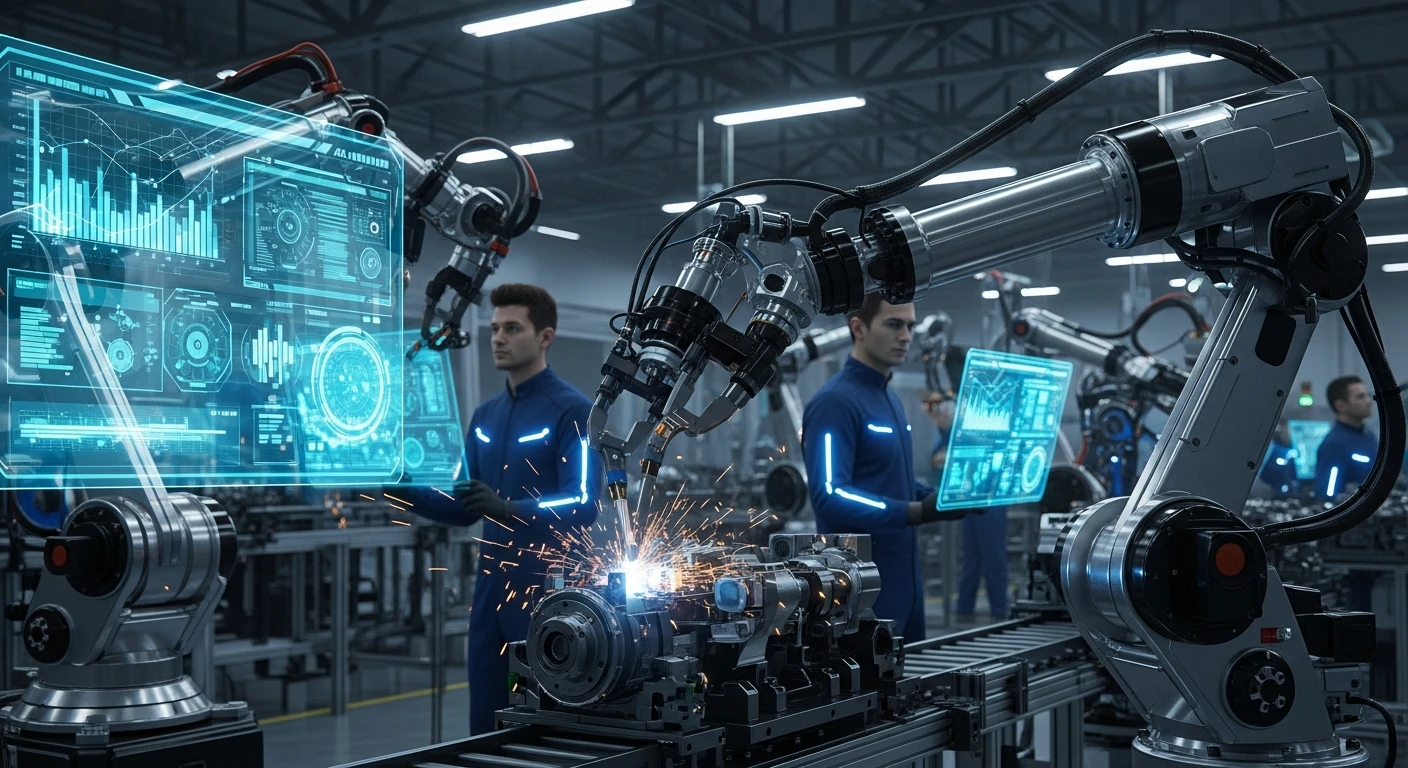In the fast-evolving landscape of industrial innovation, the manufacturing sector finds itself at a critical juncture where the adoption of generative artificial intelligence (genAI) is both a game-changer and a significant vulnerability, posing unique challenges. As companies rush to integrate AI tools to streamline operations and enhance productivity, they are simultaneously becoming prime targets for cybercriminals who exploit these very technologies. A recent report underscores the alarming reality that nearly all manufacturing organizations are leveraging genAI applications, yet this widespread adoption has opened new avenues for sophisticated attacks. Trusted cloud platforms, integral to daily operations, are increasingly weaponized to distribute malware, highlighting a perilous intersection of technological advancement and cybersecurity risk. This dynamic poses a pressing challenge for an industry striving to balance the benefits of digital transformation with the urgent need to protect sensitive data and maintain operational integrity.
The stakes have never been higher as the manufacturing sector grapples with vulnerabilities introduced by AI and cloud services. With adoption rates of genAI tools nearing universal levels, platforms like ChatGPT and Google Gemini are reshaping workflows, yet they also expose companies to unprecedented threats. Cyber attackers are quick to capitalize on these innovations, using AI to craft advanced phishing schemes and exploiting cloud environments to bypass traditional security measures. Beyond technical risks, data leaks through personal and corporate app usage further complicate the situation, often resulting in the exposure of critical information. As manufacturing leaders navigate this complex terrain, the urgency to implement robust defenses becomes clear, setting the stage for a deeper exploration of how the industry is responding to these multifaceted challenges.
Emerging AI Adoption and Cybersecurity Risks
Rapid Integration of GenAI Tools
The manufacturing sector’s swift embrace of generative AI technologies marks a transformative shift in operational efficiency, but it comes with significant cybersecurity implications. Reports indicate that adoption rates are staggering, with nearly every organization incorporating tools such as ChatGPT, Google Gemini, and Microsoft 365 Copilot into their workflows to drive innovation and productivity. These platforms enable everything from automating routine tasks to generating complex reports, fundamentally altering how businesses operate. However, this near-universal reliance on AI introduces a host of vulnerabilities, as cybercriminals leverage similar technologies to craft highly targeted attacks. The dual nature of AI as both a boon and a bane underscores the urgent need for manufacturing firms to reassess their security postures while capitalizing on these powerful tools to stay competitive in a digital-first world.
Alongside the rapid integration of genAI tools, there is a growing recognition of the risks tied to unmanaged usage, prompting initial steps toward mitigation. Many organizations are beginning to restrict access to unvetted AI applications, particularly those lacking transparency in data handling, to curb potential threats. Security policies are evolving to address the misuse of personal accounts for business purposes, a practice that has declined significantly in recent months as companies shift toward approved, enterprise-grade solutions. This transition reflects an industry-wide awareness that while AI offers immense potential to enhance operations, unchecked adoption can lead to disastrous breaches. The focus now lies in striking a balance between harnessing AI’s capabilities and establishing governance frameworks that prevent exploitation by malicious actors seeking to undermine organizational stability.
Early Efforts to Address Vulnerabilities
As the manufacturing sector becomes more dependent on AI, early efforts to address emerging vulnerabilities are taking shape with a sense of urgency. Companies are increasingly implementing app-specific restrictions, targeting platforms deemed high-risk due to insufficient security protocols or opaque data practices. Beyond mere restrictions, there is a push to educate employees on the dangers of using personal accounts for sensitive tasks, a practice that often leads to unintended data exposure. These preliminary measures, while not exhaustive, signal a proactive stance against the backdrop of rising cyber threats. The challenge remains in scaling these efforts to match the sophistication of attackers who continuously adapt their strategies to exploit AI-driven environments.
Another critical aspect of these early efforts involves the adoption of advanced security tools to monitor and mitigate risks associated with genAI usage. Technologies such as data loss prevention (DLP) systems are being deployed to detect and prevent unauthorized sharing of sensitive information through AI applications. Additionally, some firms are exploring remote browser isolation for accessing high-risk platforms, minimizing the potential impact of malicious content. These technical safeguards, combined with policy-driven restrictions, aim to create a multi-layered defense against the evolving threat landscape. However, the effectiveness of these measures hinges on consistent enforcement and the ability to stay ahead of cybercriminals who exploit the rapid pace of technological change in manufacturing.
Exploitation of Trusted Platforms
Cloud Services as Attack Vectors
The exploitation of trusted cloud platforms represents a significant and growing threat to the manufacturing sector, as cybercriminals capitalize on user familiarity to distribute malware. Services like Microsoft OneDrive and Google Drive, deeply embedded in everyday operations for file sharing and collaboration, are frequently abused by attackers to host and spread malicious content. A substantial percentage of organizations report monthly incidents of malware downloads through these platforms, often before cloud providers can detect and remove the harmful files. This brief window of opportunity allows attackers to inflict considerable damage, especially when infected files are shared internally among unsuspecting employees, amplifying the reach of the threat across entire networks.
Compounding the issue is the inherent trust users place in these widely recognized platforms, often bypassing the skepticism that might accompany less familiar sources. Cybercriminals exploit this trust by embedding malware in seemingly legitimate files or links, making it challenging for even vigilant employees to identify threats. The scale of the problem is evident in the sheer number of users encountering malicious content monthly, underscoring the limitations of current detection mechanisms employed by cloud providers. For manufacturing firms, where operational downtime can result in significant financial losses, the need for enhanced security protocols around cloud usage is paramount. Addressing this vulnerability requires not just reactive measures but a fundamental rethinking of how trust in digital tools is managed.
Challenges in Timely Threat Detection
Timely detection of threats within trusted cloud environments remains a formidable challenge for manufacturing organizations, as the speed of cyberattacks often outpaces defensive responses. Once malicious content is uploaded to platforms like GitHub or Google Drive, it can spread rapidly through internal sharing before security systems flag the issue, leaving a critical gap that attackers exploit with precision. This delay in identification is particularly problematic in high-stakes environments where sensitive data and intellectual property are at stake. The reliance on cloud providers to eventually remove harmful content is insufficient, as the damage is often done within the initial hours of exposure, highlighting the need for more proactive and immediate solutions.
To combat these detection challenges, some companies are turning to in-house monitoring tools and third-party security solutions that offer real-time threat analysis for cloud interactions. These systems aim to identify anomalies in file behavior or user activity that could indicate a breach, providing an additional layer of protection against malware proliferation. Yet, the effectiveness of such tools varies, often depending on the scale of the organization and the resources allocated to cybersecurity. For many manufacturing firms, the cost of implementing cutting-edge detection mechanisms must be weighed against the potential losses from a successful attack. This ongoing struggle to close the detection gap illustrates the broader difficulty of securing trusted platforms in an era of relentless cyber threats.
Data Exposure and Policy Challenges
Sensitive Information at Risk
Data exposure stands as a pervasive and urgent concern for the manufacturing sector, particularly as the lines between personal and corporate app usage continue to blur in digital workflows. Platforms like Google Drive and LinkedIn, ubiquitous in workplace environments, often become conduits for unintended leaks of sensitive information due to lax oversight of personal account usage for business tasks. Regulated data, including personal and financial details, frequently surfaces in policy violations, alongside critical assets like intellectual property and credentials. This vulnerability is especially pronounced when employees use AI tools to process or summarize documents, inadvertently exposing confidential content to unsecured platforms, thereby heightening the risk of data breaches with far-reaching consequences.
The implications of such data exposure extend beyond immediate security breaches, impacting regulatory compliance and organizational reputation in profound ways. When sensitive information is compromised, manufacturing firms face not only potential fines but also the erosion of trust from clients and partners who rely on strict data protection standards. The challenge is compounded by the sheer volume of data processed daily through both personal and AI-driven applications, making comprehensive monitoring a daunting task. Addressing this issue demands a cultural shift toward stricter data handling practices, alongside technological solutions that can identify and block unauthorized data sharing before it escalates into a full-blown crisis.
Policy Gaps and Enforcement Issues
Beyond the inherent risks of data exposure, significant policy gaps in the manufacturing sector exacerbate the challenge of safeguarding critical information. Many organizations lack comprehensive guidelines governing the use of personal apps for business purposes, resulting in inconsistent practices that leave sensitive data vulnerable to exploitation. Even where policies exist, enforcement remains a persistent hurdle, as employees may bypass restrictions either out of convenience or lack of awareness about the risks involved. This disconnect between policy intent and practical application creates fertile ground for cybercriminals to target unsuspecting users, underscoring the need for more robust frameworks that align with the realities of modern digital workflows.
Strengthening policy enforcement requires a multifaceted approach that combines employee training with technological oversight to ensure adherence to data protection standards. Regular audits of app usage and data sharing practices can help identify weak points in existing policies, while automated systems can flag violations in real time to prevent potential leaks. Additionally, fostering a culture of accountability within organizations is essential to ensure that employees understand the importance of following security protocols. For manufacturing firms, closing these policy gaps is not merely a compliance exercise but a strategic imperative to protect against the escalating threats posed by data exposure in an AI-driven era.
Strategic Responses to AI-Driven Threats
Shift to Secure AI Integration
In response to the mounting cyber risks associated with AI adoption, the manufacturing sector is undergoing a pivotal shift toward secure, enterprise-grade integration of these technologies. Companies are increasingly moving away from personal accounts and unverified tools, opting instead for controlled environments such as Azure-hosted OpenAI services and Amazon Bedrock to embed AI into their systems. This trend reflects a maturing understanding that while AI offers transformative potential for streamlining processes and enhancing decision-making, its benefits can only be realized within frameworks that prioritize security. By leveraging programmatic integration through API endpoints, firms aim to minimize vulnerabilities that arise from unmanaged usage, setting a new standard for responsible innovation.
This strategic pivot to secure AI integration is accompanied by a broader industry consensus that traditional cybersecurity measures fall short against AI-powered threats. Experts advocate for a layered defense approach that incorporates not only technical solutions but also governance policies tailored to the unique challenges of genAI tools. The high adoption rate of enterprise solutions signals a proactive effort to mitigate risks before they materialize into breaches, yet the journey is far from complete. Manufacturing leaders must continue to invest in scalable security architectures that evolve alongside technological advancements, ensuring that the pursuit of efficiency does not come at the expense of operational safety in an increasingly hostile digital landscape.
Building Robust Defense Mechanisms
Building robust defense mechanisms has emerged as a cornerstone of the manufacturing sector’s response to the cyber threats that accompany AI adoption. In the past, organizations scrambled to implement data loss prevention policies and download inspections to curb the risks of malware and data leaks through cloud platforms. Many have restricted access to high-risk genAI applications, recognizing that transparency and data handling issues pose significant dangers. These efforts, though varied in execution, have laid the groundwork for a more resilient industry, reflecting a determination to protect critical assets against the sophisticated tactics of cybercriminals who exploit trusted systems.
Looking ahead, the focus has shifted to fortifying these defenses with next-generation technologies and stricter governance to address evolving threats. Manufacturing firms are encouraged to adopt real-time monitoring tools and integrate advanced threat detection systems to close gaps in cloud security. Collaborative efforts between industry stakeholders and cybersecurity experts have become vital to share insights and develop standardized protocols for AI usage. By prioritizing proactive measures and fostering a culture of vigilance, the sector aims to turn past vulnerabilities into lessons that will safeguard future innovations, ensuring that technological progress and security go hand in hand.









